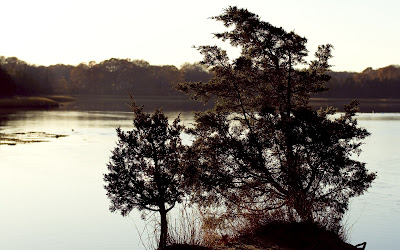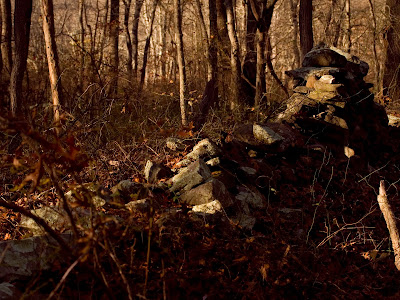What I like:
- The size, with the 20mm lens that comes with the camera, is truly exceptional. My old Pentax 35mm camera has finally found its spiritual successor. That Pentax body, a K1000 from the late 1970's, was super-compact, built like a tank, and accepted Zeiss. It was such a fantastic camera, it received a continual manufacture longer than any camera body that I know of, from 1976 to 1997.
Leica has always followed the general formula of small body, great glass, and simple function, so I guess it's of little surprise that they and Panasonic work closely. But even they got bigger than their original cameras, and they always cost your first-born. The Pentax sold for a relatively paltry $299 and came with a great 55mm f/2 lens. Conveniently, according to The Inflation Calculator, that $299 is worth $1,118.85, which is right in line with GF1's $899 price. If you once loved a Pentax, you owe it to yourself to try this camera. - For a sensor that's about two-thirds the area of an APS-C camera, the low-light performance is excellent. Recording high-def video while driving at night results in a low-noise, brightly exposed roadway. It blows things like the Flip and other YouTube-ready recorders clear out of the water.
- The rear LCD works better as a viewfinder than you'd expect. While I had some issues with keeping the camera perfectly stable while also holding it far enough away to see the screen, I adapted. Still, the large display, depth-of-field preview, and live-view of the results of your work makes this perhaps the best trainer camera on the market.
- It's almost pocketable. It will fit inside of a big jacket pocket. If you've ever held an old Pentax, it's similar in size. It's comparable to super-zooms from the major manufacturers, and it blows them clean out of the room on every metric. Yes, this costs a lot more than a super-zoom, but you can buy the camera, and every focal length from 14-200mm (28-400mm 35mm equivalent) for less than the cost of a single pro-sumer DSLR body from Nikon or Canon, and this will provide similar low-ISO results.
- The button layout is pretty good considering the size of the body.
- The micro four thirds system makes an excellent family camera kit. As I mentioned, you can buy the body, and two more lenses, the 45-200m and 14-45mm, for about $1,540. That's less than just the body of the Canon EOS 7D. That isn't cheap by any measure, but considering what the size allows you to do, namely carry it about, the maxim of "the best camera is the one you have with you" means one hell of a camera.
- Finally, image quality. Photos are almost noise-free up to ISO-800, but get pretty dirty at 1600. Still, it destroys every super-zoom and compact camera on the market. I think I would have liked fewer pixels and more ISO, but as it stands, in high-light situations, this camera resolves a bucket-load of detail. Far, far, FAR more than a compact, more than the Canon G11 or Leica X1, and about as much as a prosumer DSLR like the EOS 50D. The lenses currently available from Panasonic are also fantastic. Considering the size, price, and target market, Panasonicthehedgehog is producing what can only be called some of the best lenses on the market with price considered.
- Fantastically fast autofocus. Much faster than other compacts and the Olympus Pen EP-1.
What I don't like:
- The low-light photography performance is not comparable to larger-sensored cameras like the Nikon D300 or Canon EOS 50D, which are similar in price. Even my old EOS 20D outperforms the GF1 at ISO above 800. Like I mentioned before, I would have liked fewer pixels and more ISO, but the balance as-is is good.
- The shutter/aperture adjustment dial feels cheap and is hard to move quickly and easily. Compared to the two-dial setup of larger SLR's this is cumbersome and slow.
- The flash is stupid. I wanted the larger sensor to have more chances to not use the flash. Built-in flashes are weak and crappy, and this is no different. They wash-out the image and give all photos taken with it a snapshot quality. I guess it's useful in a pinch, but I would have preferred smaller size and lower weight.
- The sensor's dynamic range far exceeds a compact camera, but is still noticeably lower than a full-format or APS-C. I'd like some more range, which could have been achieved with a lower pixel count. This can be remedied to a degree by shooting in RAW and working some Photoshop magic on it, but the raw materials just aren't as good.
- The overall layout is not conducive to heavy photography. Quickly changing parameters, such as flash level, requires digging into a menu, and adjusting speed and aperture with the same janky jog dial is slow. The space taken up with the crap flash could have been used for more controls, which would have been much preferred for a frequent and heavy photog. If size isn't a concern, I'd go with an APS-C SLR camera. The GF1 outperforms entry-level cams like the 500D/Rebel or Nikon D3000, but even there the ISO performance out of the APS-C cameras is better. By the time you get to the 50D or D90, which are both about $200 more than the GF1, resolution and ISO performance are both better.
- SD cards are not known for blistering speeds, and the difference between high-end CF cards is very noticeable in burst mode, shooting in raw, and extracting files from the card. I understand that size is a serious concern, but when raw files can be over 15MB each, and the fastest SD cards on the market max-out at 30MB/s, I yearn for a CF.
The micro four thirds market is just starting, and I think the future is bright. Canon and Nikon have been slow to do anything in the entry-level SLR market that might threaten their profitable high-end. Also loathe they have been to do anything that would disrupt their lens market which currently flows neatly in both price and quality from compact, super-zoom, and APS-C to full-format.
This oligopoly of the market has only gotten worse in the digital age, and the micro four thirds standard is the first one to truly offer something different to lure people away from Can-kon. It's high-quality, undercuts the leaders in glass quality, and offers a compact shape that simply cannot be had elsewhere. This is, hopefully, a new era.



















































